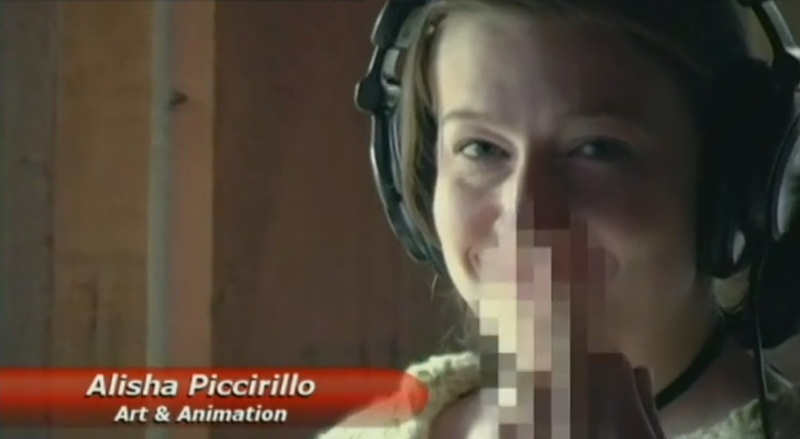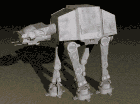Star Wars Rogue Squadron III: Rebel Strike
GameCube - Factor 5, 2003
And so we have come full circle. The inspiration for the Rogue Squadron series, Shadows of the Empire, suffered badly from trying to do too many things. Rogue Squadron 1 however, focused on a single level, and did it justice across a whole game.
Rogue Squadron 2 added two more level types from Shadows: space battles and turret levels. It suffered for not learning lessons from its predecessors or contemporaries, and in doing so watered down the successful formula.
Now Rogue Squadron 3: Rebel Strike finishes the job, adding the final rubbish bits: third-person shooter and speeder bike levels. Their journey to the dark side is complete.
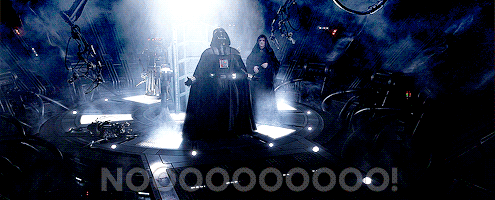
Look, I loved Shadows in 1997 and I love it in 2025. I have a little model of the Outrider sitting on my shelf right now. But why on Earth (or Tatooine) would you slowly turn your game series directly into the exact flawed experience you were hired to fix? It was the one glaring fatal criticism that fans, reviewers and even LucasArts and Factor 5 leveled at Shadows.
So why did they do it? Maybe they were really committed to the bit and like poetry and wanted to rhyme with Shadows? I think there is only one answer and it’s one that I have been trying not to arrive at since I started the RS1 retrospective. F5 earned the benefit of the doubt with the first game, but despite their impressive tech innovations I can’t think of anything novel that they have introduced to the games. Switching ships mid-mission perhaps, but it doesn’t really add much mechanically. The gameplay and systems have always been copied from previous games.
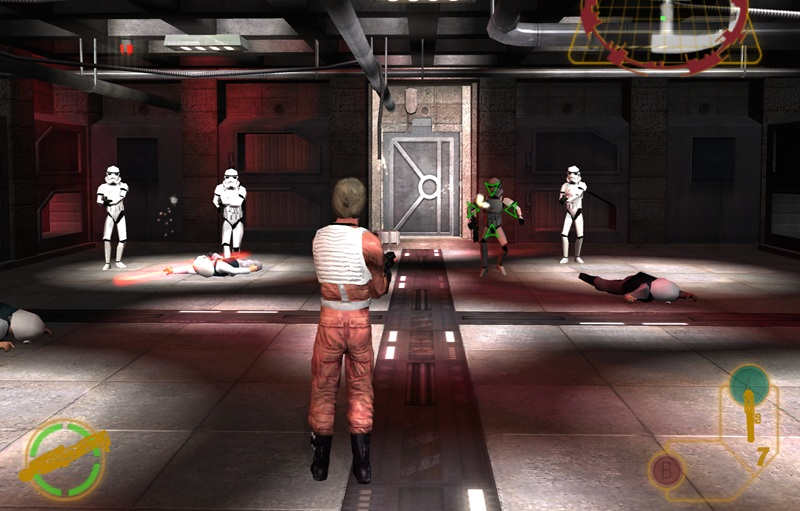
Going back to Shadows after the first two RS games made me feel that some of the interviews were… exaggerated, let's say. Head of F5 Julian Eggebrecht had talked about creating or innovating like the radar, space battles or flight controls were already fully formed in Shadows. They have also claimed variously that F5 came up with the idea of Rogue Squadron based on Hoth level before LucasArts did, or even that it was based on the Star Wars arcade game, and not on Hoth at all. We’ll revisit this later.
So is there anything new in these new-old parts of RS3?
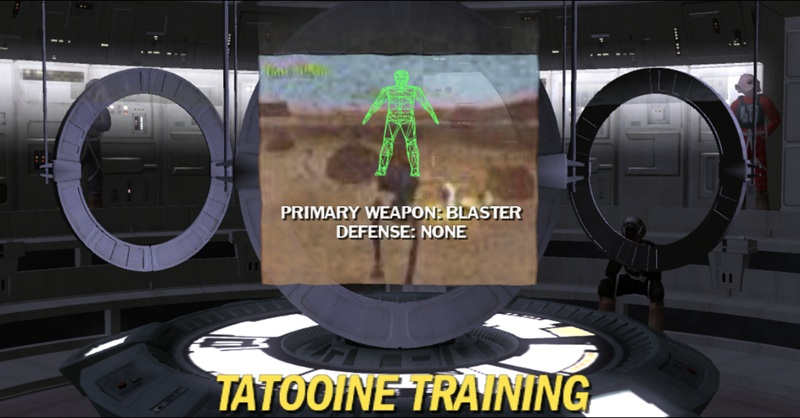
In an interview Eggebrecht mentions that a lot of content was cut from RS2, which only had nine months of dev time, and ended up here instead. Third person control was one of these, already used in RS2, but limited to pointlessly running your little guy around in the hanger to choose your craft.
Make no mistake this isn’t a fun side mission, it’s front and centre, the first moment of the game in the opening training mission before you even step foot in a spaceship. It’s trying for a Battlefield 1942 (Digital Illusions CE, 2002) ‘wow’ moment of being a little guy who can step into a vehicle and continue fighting in a larger world. (Incidentally, Battlefield would later inspire Star Wars: Battlefront (Pandemic, 2004).) The missions are designed to flow with the story, you may fight in the sky, land the ship, run around to rescue someone, fly off again to escape.
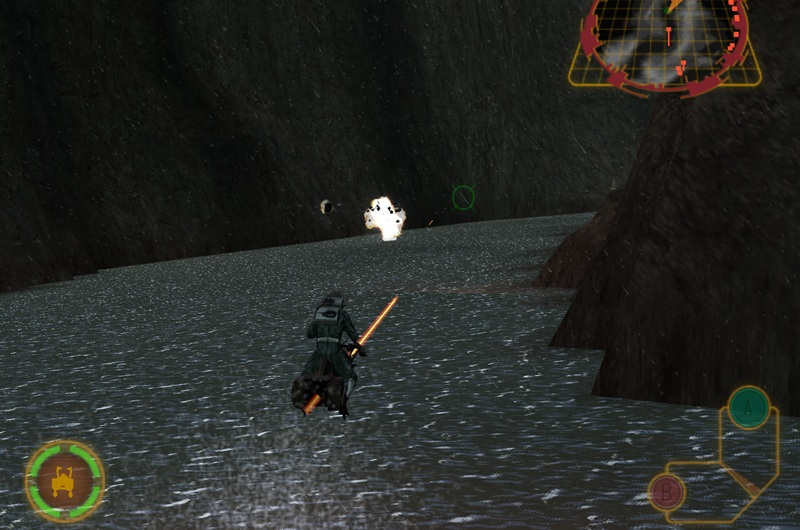
LucasArts first created this style in Battle for Naboo (Factor 5/LucasArts, 2000), but in RS3 you don’t drive into a building and pop out the other side as a new vehicle or person, let alone get in or out of vehicles like Battlefield. Instead you get a cutscene or loading screen. The third-person parts are less substantial even than in Shadows. It’s not a real third-person game, it’s just hammering the shoot button while vaguely pointing yourself in the right direction. The camera is fixed like Resident Evil (Capcom, 1996) or follows you around on a predetermined path, not an over the shoulder camera.
You will be doing one of two things: firing blindly around corners or at the side of rooms where the camera is not showing, or wrangling with the auto-aim. For all its criticisms, Shadows had a real but under-baked third-person shooter in there. This feels like some sort of crazy bonus level or minigame, and there’s so little to it that I imagine it would have been better as a light-gun style or turret shooting section.
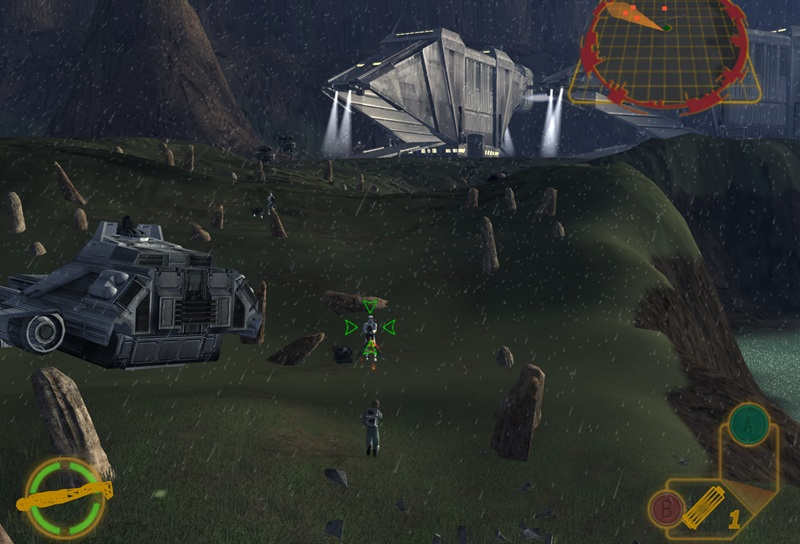
Eggbrecht says the third person parts were inspired not by Shadows, but by GTA3, which is an even higher target to miss. But he says the camera is like this because he liked Robotron. In this context he’s referring not to the 2D original but to Robotron X (Player 1, 1996) or its N64 port (1998), a throwaway, poorly reviewed, twin-stick shooter (if you play it now you will see why). A quick glance at the Wikipedia page will tell you the camera was one of the main complaints at the time. In the last game there was a bonus survival level where you have to survive waves of enemy ships. In RS3 the equivalent level is on foot in a square room, Robotron style. Please don’t tell me they put this bizarre camera and control scheme across the whole game just so they could have this bonus level.
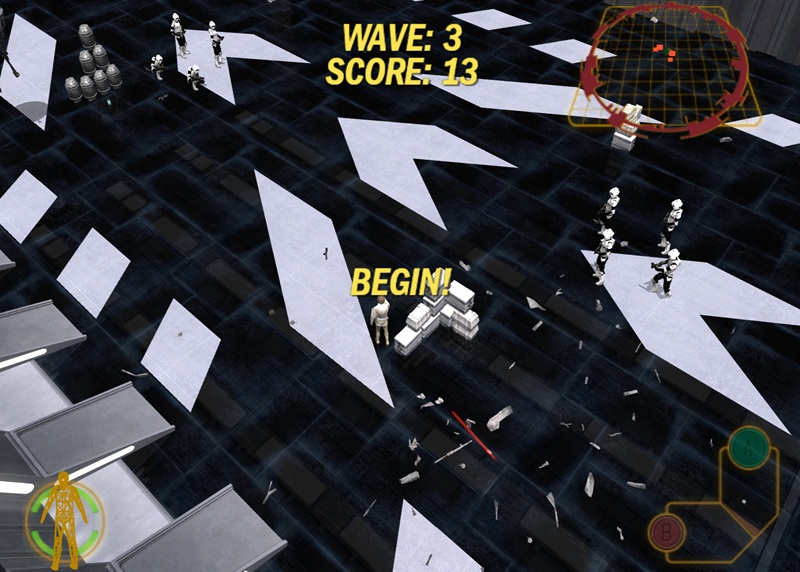
This is where the fun begins!
The flying levels are still great, however, and better than RS2. There’s more going on than RS2 yet they’re easier to parse as the pace is slower, and the lighting and colours are much clearer. This makes it easier to see and hit enemies, and you feel much more in control even to the point of letting go of the trigger when a friendly flies past. The missions are more flexible with time and approach, so when enemy ships get behind you (which they do much less frequently now), you won’t fail the mission because of it. You can take your time and have fun.
The challenge instead comes once again from getting gold medals rather than just trying to survive at all. Not everyone liked this, some people enjoyed the difficulty of RS2, but for me it’s fun again. Like RS1 I wanted to play the levels again as there are multiple ways to achieve objectives. There’s also more of story, characters and chatter during the missions making it feel more like a team. They actually listened to feedback and LucasArts focused on making this game less frustrating and difficult.
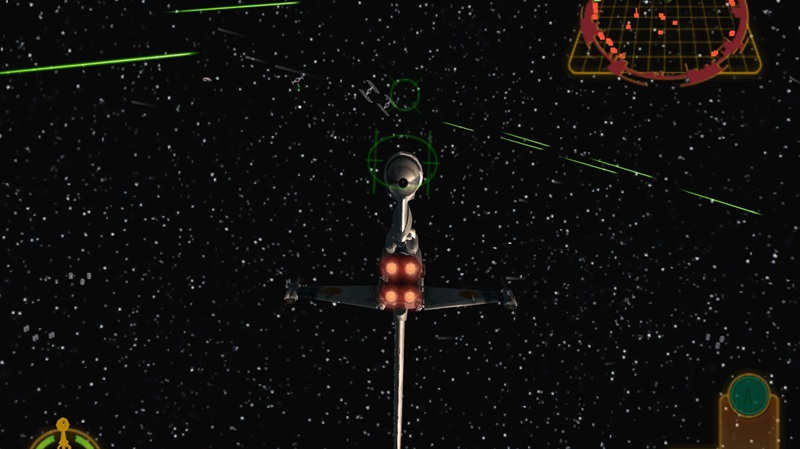
Filler Content
So if the core game is good, why include all the third-person stuff? Aside from the cut content from RS2, Eggebrecht says there is “a lot of filler content” here. This doesn’t make sense: if they had more dev time, why did they need filler? A different excuse he gives is that “We didn’t have a full game in us”. Separately, he says this is because of the team’s burnout on flying games, so they needed to do something else. As we will come to see, this excuse is also absolute bollocks.
So what other ‘filler content’ is there?
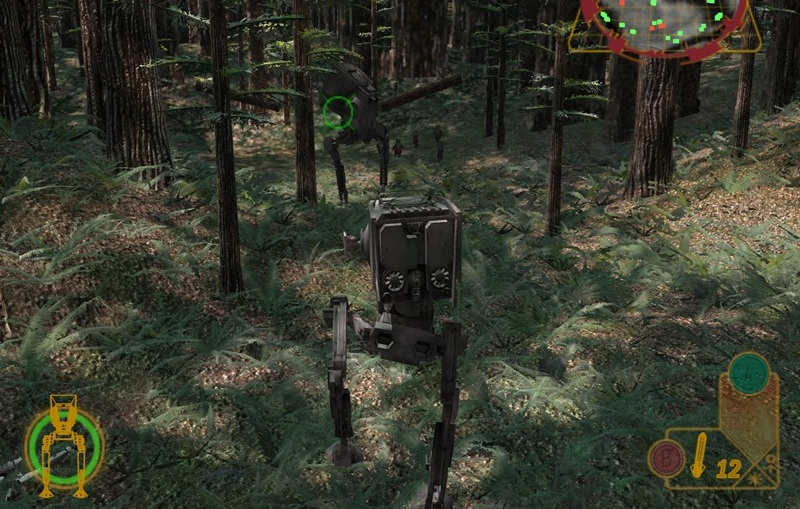
There are some ok vehicle levels, but they are so linear and basic that again they could mostly be better off as turret shooter levels. The speeder bike level is a cross between the Shadows swoop bike level and the Return of the Jedi arcade game speeder level. It’s the only good non-flying level in the game, but still it goes on far too long for what it is.
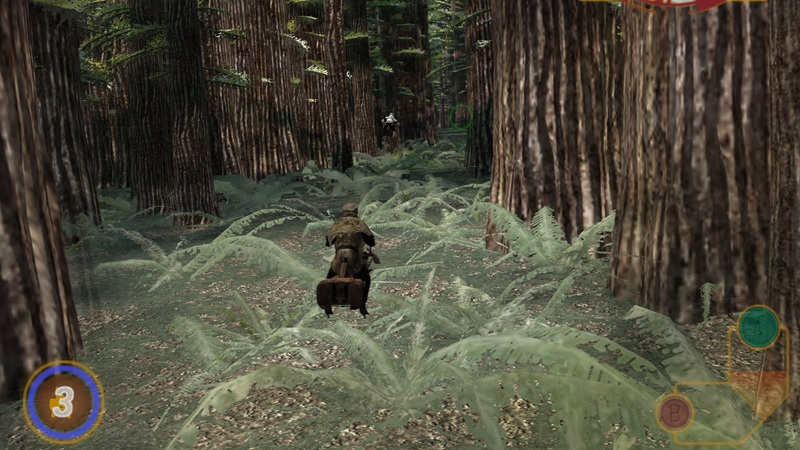
The Hoth level this time contains everything except flying a snowspeeder. A good idea, but it amounts to bad third-person sections and some quick-time events. It shows a total misunderstanding of what made the Hoth level good. It was exciting because I was the one who took that AT-AT down! I flew the cable around and around! In this Hoth level I just pressed A when prompted.
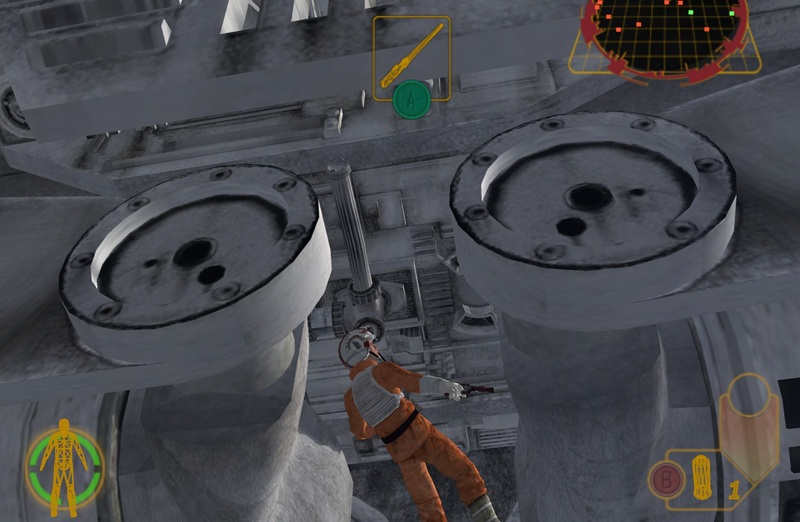
Later in the game you suffer the worst 2D platformer you have ever played in your life. It is genuinely abysmal in conception and execution, and the controls barely allow you to complete the level. The finale to this is another QTE where you must mash A as much as possible in 20 seconds, after which you fail so that the following cut-scene makes sense.
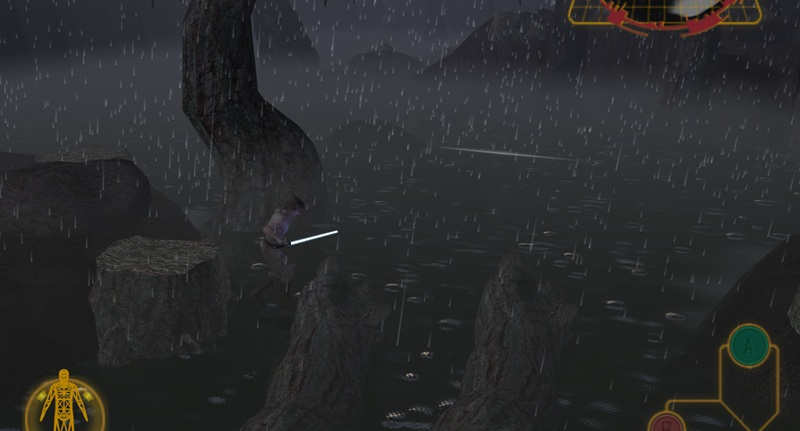
Ah yes, the cutscenes. Apart from story cutscenes, there are edited clips from the movies, mostly unskippable. Some levels alternate between a minute or so of gameplay and cutscenes throughout the level. One level has you finish, then watch a cutscene, it then returns you to a new bit of gameplay for around three seconds in which you press one QTE button. One more cutscene, then level over. It is ludicrous.
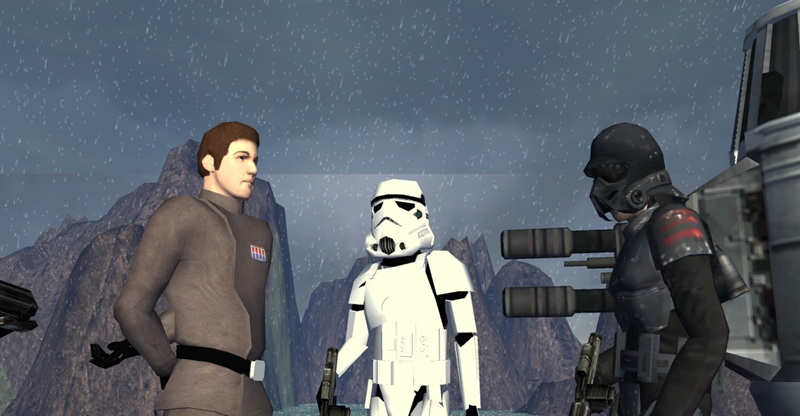
Instead of making the game, they have spent their time making more filler. There are a couple of split-screen multiplayer modes, the entire Star Wars, Empire and Jedi arcade games are fully playable as extras and the entirety of RS2 is playable in co-op, for some reason, which people seem to like.
But why spend time doing all that instead of making the core game, to its huge detriment. At the end of the RS2 retrospective, we saw Holger Schmidt, lead coder specifically say he wanted to spend more time on gameplay now that the tech was done. Eggebrecht joked “That’s for the sequel!”, and it turns out it indeed was a joke. Even including the cutscenes, the levels are much shorter than previous games, one is around a minute long. The big finale bonus mission is a slight reskin of the big finale main mission, which is just really sad to see.
As a Gamespot preview reminds us, once you have invested time and money into creating a game engine, design, tools and established a fan base, you can cash in by making a sequel with incremental improvements and spend the time improving up and making more content. Breath of the Wild and Tears of the Kingdom is a perfect example of this. Factor 5 decided to do the exact opposite. They also did the exact same thing with Rogue Squadron and Battle for Naboo, also claiming it would be impossible without rewriting the engine.
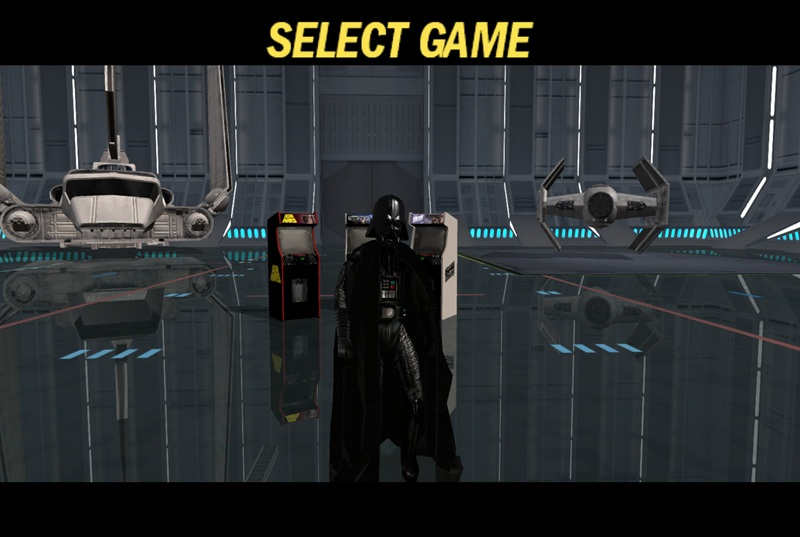
In the documentary on the game disc, Eggebrecht specifically says that they ran out of time because “the decision was made by the engineering team” to rewrite the game engine, which I found very distasteful. The Wikipedia entry also singles out the engineering leads. This seems like a massive cop-out when he is the boss and a big ‘DIRECTOR JULIEN EGGEBRECHT’ flashes up on the screen to John Williams’ fanfare when you complete the game. And if you didn’t have time, then why did you waste it all on the extra content? He seems to own up to some of this in later years and admits he had an ego issue, but more on that later.
Eggebrecht says that if you put RS2 and RS3 together, you get one complete experience of the Star Wars Trilogy. I’d hate to hear that after paying full price and finishing it on a single Sunday afternoon.
Reviews
Many reviews mentioned the length of the game, but they were unanimous on one aspect: it should have stuck to flying missions. Eurogamer went one further, comparing it to the disappointment of the prequel movies. “Maybe someone should have borrowed an X-Wing and flown it into Factor 5 to stop it soiling its legacy”. Game Informer had an interesting take: “I really get the impression that it became too ambitious of a project and the company lost control of it.“
If the relationship with LucasArts wasn’t already soured, it was now, and the opportunities started drying up.
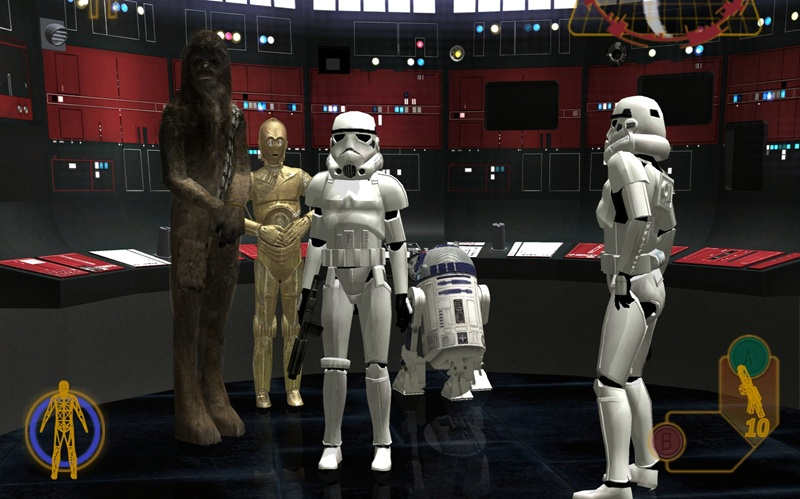
Life After Rogue Squadron
So what other ideas did F5 have? Despite Eggebrecht blaming some RS3’s shortcomings on the team being burnt out on flight sims, they next pitched an Empire version of Rogue Squadron, copying what LucasArts did with TIE Fighter after X-Wing. After that was a pitch for Rogue Squadron: X-Wing vs. TIE Fighter copying the multiplayer focus and title of X-Wing vs. TIE Fighter.
When neither of those worked out, they were given creative freedom for a new IP and a bigger budget by Sony. They decided to make ‘Rogue Squadron but with dragons’.
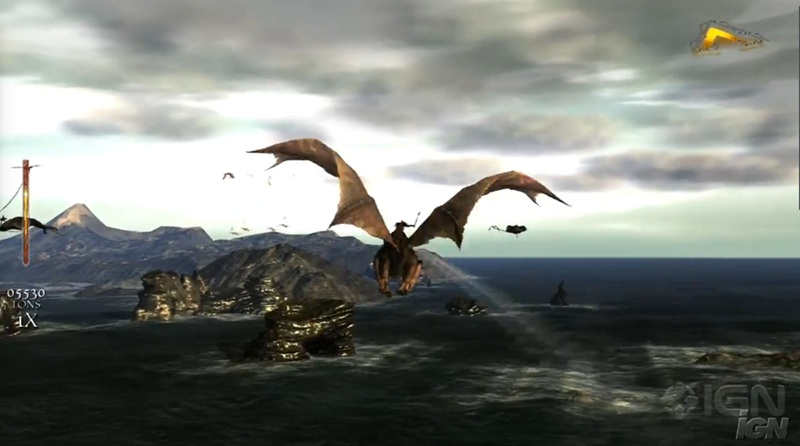
When the game, Lair, turned out a spectacular failure in every way, Eggebrecht first blamed the fact it was a launch title (like the very successful RS1 and RS2). Next he blamed Sony for the PS3 not being powerful as they had planned. He then blamed reviewers for not playing the game properly, and Sony mailed a ‘Reviewer’s Guide’ to media outlets who gave them bad reviews. Eggebrecht wrote the foreword, telling them “Open your mind”. He blames Sony’s marketing department for the immediate backlash, but it wasn’t Sony’s words which caused articles like ‘Factor 5 Absolves Itself Over Lair Being A Big Pile of Wank’.
Eggebrecht eventually blamed some sort of curse, saying the whole of the development was haunted. As Destructoid again put it, “Factor 5 is actually incapable of making a bad game ever, it’s just that dark forces were working against them.”
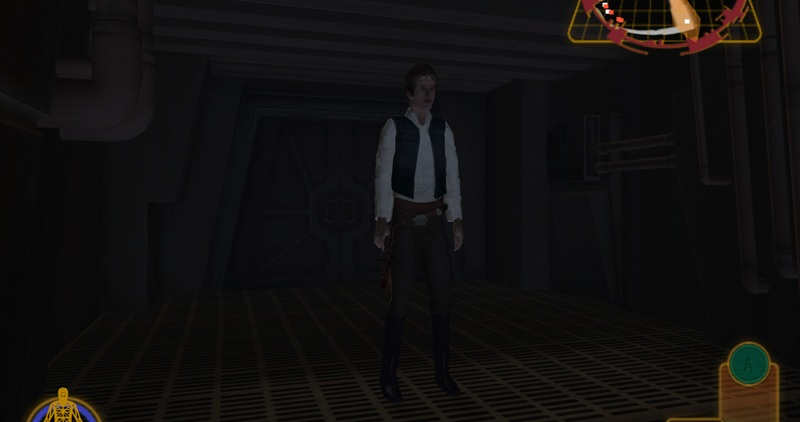
The excuses continued. In a Wired preview, Eggebrecht says they chose PS3 for the sole reason of the ‘Sixaxis’ motion controls, and could not put it on Xbox360 specifically because it had no motion controls. Later, in a Polygon retrospective another U-turn as they say, F5 found the Sixaxis laughably bad until, Eggebrecht says, Sony forced them to use the Sixaxis, which was why the game failed. Sony execs deny this happened as did Polygon’s insider source.
“Team members continually spoke of working for Julian Eggebrecht specifically, often without prompting.” say Polygon. Cue the stories of verbal abuse, micromanagement, being difficult to work with, poor management style and staff churn, with new staff being told the game was almost ready to ship, when in reality there was nothing.
Most tellingly for us, level designer Joe Spataro describes a team that only knew how to do one thing, and couldn’t make anything original:
“He and the original guys in Factor 5, they knew that was successful and they tried to make everything like that. This was a different game and it needed something new and it needed something interesting. They kept tuning it that way and pretty soon we had the dragons going 600 mph, couldn’t see the environment, couldn’t really show off the PS3 capabilities”.
No surprise that this disaster still hadn’t dissuaded them from more flying games despite the supposed ‘flying game burnout’ that had been mentioned. The relationship with Sony soured, and they turned back to Nintendo to unsuccessfully pitch two more flying games, versions of Pilotwings and Kid Icarus. Kid Icarus material had been leaked as already under development, presumably to try and drum up interest for the pitch.
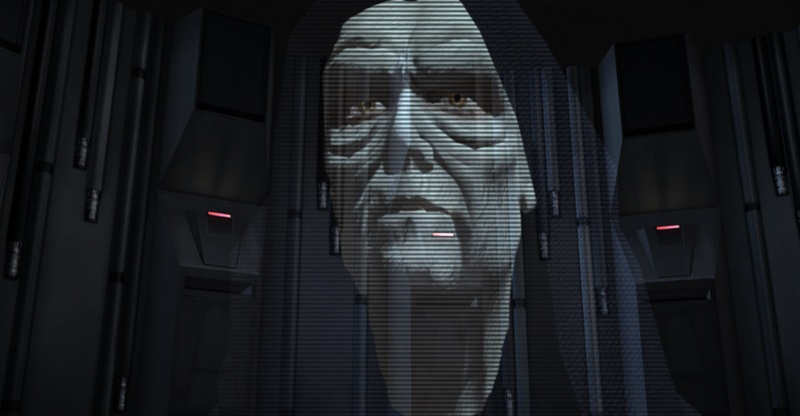
Their final original idea was (drum roll please…) to remaster the original three RS games on Wii. Their relationship with LucasArts was not great, but new management decided a remaster would be a safe bet given the 2008 financial crisis, especially as Eggebrecht decided to self-fund the development, along with two other self-funded games.
Wii version and court case
While self-funding these games, F5 still had debts of up to $10 million, up to $4 million of which was to LucasArts. When the potential publisher of one of their new games (another flying game, Superman this time) folded, F5 was in trouble.
At this point things get ugly.
Court documents alleged that F5 created a new company under Eggebrechts’s girlfriend's name, two days later selling all of F5’s assets to it for a mere $5000. They then declared bankruptcy and the new company continued work on the Wii remasters, while the employees were left with no healthcare and unpaid wages of $0.9 million, just before Christmas.
Predicatbly, Eggebrecht blames LucasArts for this in a number of ways. In the Nintendo Voice Chat podcast he bizarrely seems to imply that LucasArts wouldn’t allow them to pay their employees. “LucasArts actually pointed out that if the company would go under, that due to an old debt which Factor 5 had with [LucasArts] that they would get everything from [Factor 5] before our employees would get paid“. According to the aforementioned video, LucasArts didn’t get anything anyway in fact, as both the non-payment and transfer of assets all happened before they declared bankruptcy. Indeed after fighting for years not to pay up, in 2015 the allegations of fraud were thrown out, but F5 did have to pay their employees what they were owed.
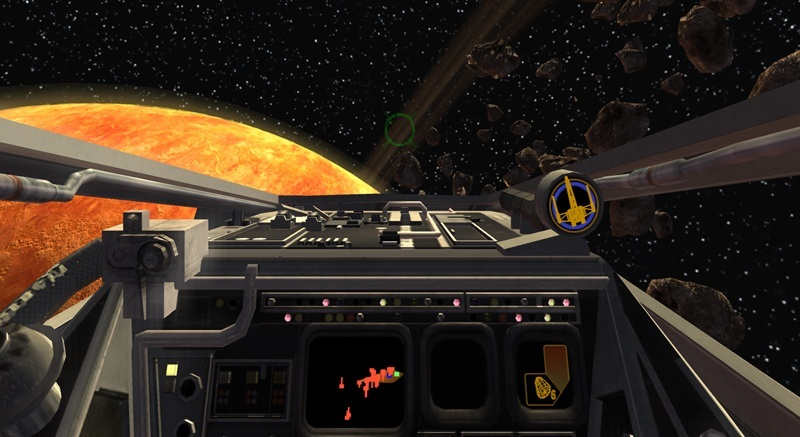
In a 2014 interview he mentions “There was a nice solution here… It could have easily been resolved by just getting this game out”. Again, it’s LucasArts’ fault. “Legally it was all sound, it just would have taken that little iota of basically believing in a game.”
In reality it wasn’t about one of history’s most creative game developers not believing in art. The financial crisis meant that publishers wouldn’t take on high risk projects, and certainly not ones with risk of bad publicity and legal action, due to the alleged actions of the developers.
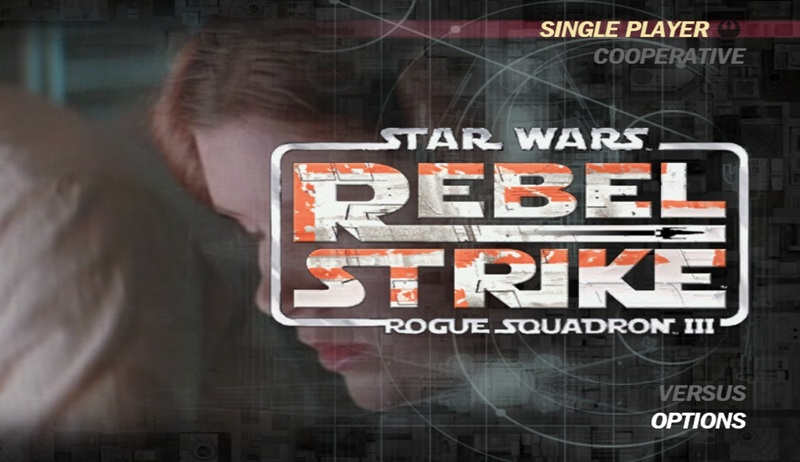
Sad for the unpaid workers, but luckily it wasn’t bad for everyone. “Everybody tried to support us, it was awesome.” Eggebrecht says of this time in his new company. He also predictably says the Wii game was “the best game we ever made”, something which no one will be able to corroborate. It had more never before seen features such as lightsaber battles that already appeared in the arcade games and so on. As an aside, the comments on some of these articles at the time are very harsh. It seems many people were already sick of F5’s attitude as well as their games.
A Eurogamer article from a mere nine years ago seems to think it’s a great shame that they didn’t release the game. In 2025 I doubt not paying your developers would be viewed with such insensitivity by the gaming press. It also hinges on Eggebrecht’s hype being true, even after their admissions on the misleading hype around Lair, so I don’t know who thought that article was a good idea.
The team went separate ways, they worked on video streaming apps and other tech solutions. Eggebrecht tried his hand at a mobile game. Now he is a director of technology at Epic Games.
I’ll leave the last word, or rather hand gesture, to Alisha Piccirillo, an F5 employee named in the unpaid wages lawsuit who also featured in the RS3 documentary:
